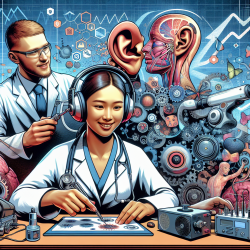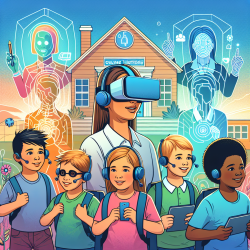The rapid advancement of technology has begun to significantly influence the fields of Audiology and Speech-Language Pathology, promising to reshape the landscape of clinical practice, education, and professional development. As we stand on the brink of this technological revolution, it is imperative for practitioners to not only become aware of these changes but to actively engage with and adapt to these emerging tools to enhance the quality, efficiency, and effectiveness of clinical services.
Donald G. Jamieson's research, "The Impact of Emerging Technologies on Audiology and Speech-Language Pathology," offers a comprehensive overview of how technology is poised to transform these fields. This paper serves as a critical resource for clinicians, educators, and students aiming to navigate and leverage these changes for improved clinical outcomes and professional growth.
Understanding the Impact
The advent of microelectronics, digital audio processing, and high-resolution visual displays has ushered in a new era for Audiology and Speech-Language Pathology. These technologies have the potential to drastically improve the scope and detail of clinical practice, from enhancing the precision of diagnostic assessments to enabling more effective and engaging therapeutic interventions.
Strategies for Adaptation
Embracing these technologies requires a multifaceted approach, focusing on ensuring the appropriateness of technology for clinical tasks and preparing clinicians to effectively utilize these tools. This involves:
- Research and Development: Engaging in or staying informed about ongoing research and clinical trials that evaluate the efficacy and application of new technologies in practice.
- Education and Training: Pursuing continuing education opportunities and integrating technology-focused training into academic curricula for current and future clinicians.
- Professional Initiative: Taking personal initiative to explore, experiment with, and implement technological solutions within clinical and educational settings.
Examples of Technological Advancements
Several key technological advancements are highlighted in Jamieson's paper, including:
- High-Quality Audio Processing: The development of affordable, high-quality digital audio processing technologies has the potential to significantly improve the assessment and treatment of auditory and speech disorders.
- Advanced Visual Displays: High-resolution, fast, and color-rich visual displays can enhance the delivery of speech and language therapy, particularly for young children and individuals with complex communication needs.
- Speech Analysis and Synthesis: New software and hardware systems offer sophisticated tools for the analysis and synthesis of speech, aiding in the diagnosis of speech disorders and the development of personalized therapy programs.
Implications for Clinical Practice
The integration of these technologies into clinical practice holds the promise of numerous benefits, including increased diagnostic accuracy, more engaging and effective therapy sessions, and enhanced patient outcomes. However, to fully realize these benefits, clinicians must be proactive in acquiring the necessary knowledge and skills to effectively leverage these tools.
Challenges and Considerations
While the potential benefits of these emerging technologies are vast, there are also challenges to consider, including the need for rigorous evaluation of technological applications in clinical settings, ensuring accessibility and affordability of technologies, and addressing the digital divide among clinicians and patients.
Conclusion
The landscape of Audiology and Speech-Language Pathology is rapidly evolving, driven by technological advancements that offer exciting possibilities for enhancing clinical practice and patient care. By embracing these changes, engaging in ongoing education and research, and taking initiative to integrate technology into their work, clinicians can position themselves at the forefront of their fields, ready to meet the challenges and opportunities of the future.
To read the original research paper, please follow this link: The Impact of Emerging Technologies on Audiology and Speech-Language Pathology.










